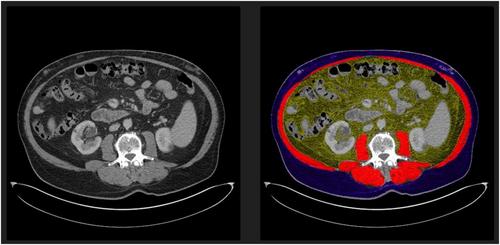Exercise intervention during chemotherapy for pancreatic cancer: Changes in body composition and function
Abstract
Background
Patients with pancreatic cancer often lose weight during chemotherapy with associated changes in body composition. The goal of the present analysis was to describe changes in body composition in pancreatic cancer patients on an exercise regimen. The long-term goal is to determine whether an exercise intervention may attenuate changes in body composition and function.
Methods
Twenty-two pancreatic cancer patients of all stages who were to receive chemotherapy were recruited into a pre-post exercise intervention study. A standard exercise prescription was individualized to include aerobic, resistance, stretch, and balance exercises. Pre- and post-intervention computed tomography-derived measures of body composition [skeletal muscle index (SMI), skeletal muscle density, visceral fat area, and subcutaneous fat area] and physical function measures (grip strength, timed up and go, 30-s chair stand, and tandem balance stand) were evaluated using paired t-tests, χ2 tests, and Pearson correlation coefficients.
Results
The subjects were, on average, 62 years of age, 55% were female, 95% non-Hispanic White, and 45% were Stage IV. Body composition changes included a median 4.6% decrease in SMI (P = 0.04), 7.91% increase in skeletal muscle density (P = 0.05), 25.07% decrease in visceral fat area (P = 0.0001), and 22.08% decrease in subcutaneous fat area (P = 0.001). Adherence to aerobic and strength exercise was 65% and 57%, respectively. Some physical function measures improved, though not significantly: chair stands increased from a mean of 11.5 to 13.0 (P = 0.59) and timed up and go improved from a mean of 11.7 to 10.3 (P = 0.26). Change in right hand grip strength was marginally positively associated with changes in SMI (r = 0.53, P = 0.06). Improvements in skeletal muscle density were seen in 63% of patients, including Stage IV patients but did not correlate with change in function.
Conclusions
Exercise is feasible during neoadjuvant chemotherapy for pancreatic cancer patients of all stages and may assist with maintaining physical function and improving body composition. Further research is needed.


 求助内容:
求助内容: 应助结果提醒方式:
应助结果提醒方式:


